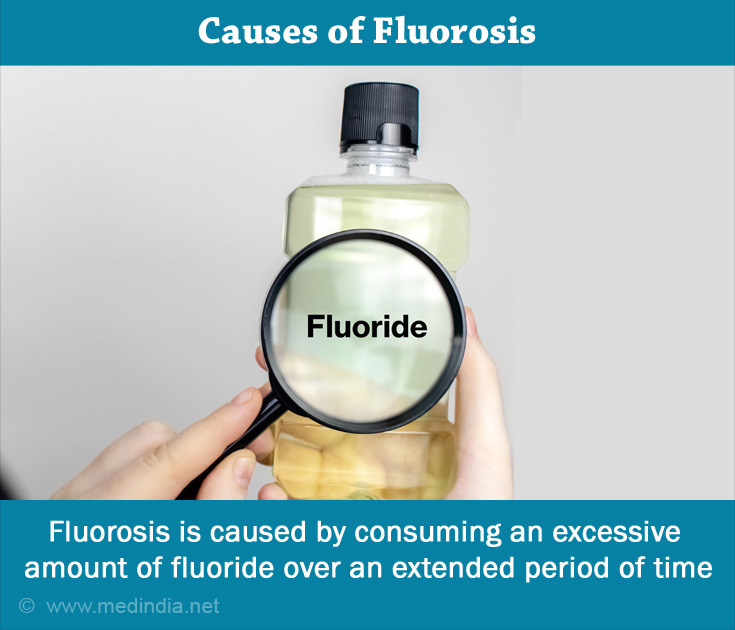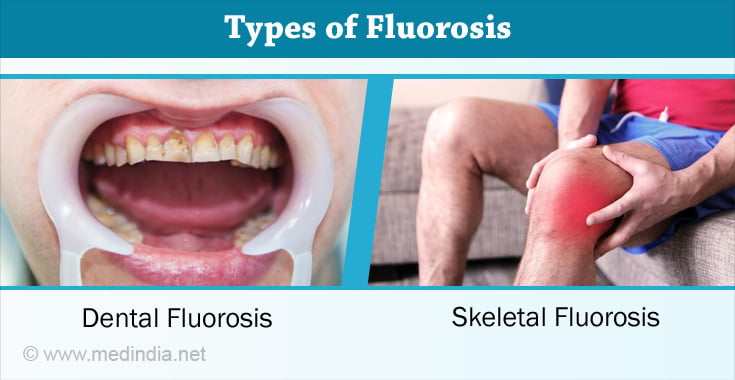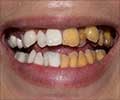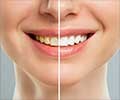- Fluoride in Drinking Water and Skeletal Fluorosis: a Review of the Global Impact - (https://pubmed.ncbi.nlm.nih.gov/32207100/)
- The fluoride content of foods and beverages from negligibly and optimally fluoridated communities - (https://pubmed.ncbi.nlm.nih.gov/12236830/)
- The fluoride content of foods and beverages from negligibly and optimally fluoridated communities - (https://pubmed.ncbi.nlm.nih.gov/12236830/)
- Fluoride in Drinking Water and Skeletal Fluorosis: a Review of the Global Impact - (https://pubmed.ncbi.nlm.nih.gov/32207100/)
- The Fluoride Debate: The Pros and Cons of Fluoridati - (https://pubmed.ncbi.nlm.nih.gov/30386744/)
- The Fluoride Debate: The Pros and Cons of Fluoridation - (https://pubmed.ncbi.nlm.nih.gov/30386744/ )
- Skeletal fluorosis in humans: a review of recent progress in the understanding of the disease - (https://pubmed.ncbi.nlm.nih.gov/3295994/)
- Prevention and Treatment of White Spot Lesions in Orthodontic Patien - (https://pubmed.ncbi.nlm.nih.gov/28566845/)
- Skeletal fluorosis in humans: a review of recent progress in the understanding of the disease - (https://pubmed.ncbi.nlm.nih.gov/3295994/)
- Clinical management of severe fluorosis in an adu - (https://pubmed.ncbi.nlm.nih.gov/23230244/)
- Fluorosis of the primary dentition: what does it mean for permanent teet - (https://pubmed.ncbi.nlm.nih.gov/10085657/)
- Fluorosis of the primary dentition: what does it mean for permanent teeth? - (https://pubmed.ncbi.nlm.nih.gov/10085657/)
- Chronic fluoride toxicity: dental fluorosis - (https://pubmed.ncbi.nlm.nih.gov/21701193/)
- Chronic fluoride toxicity: dental fluoros - (https://pubmed.ncbi.nlm.nih.gov/21701193/)
- Effect of power bleaching on the fluorosis stained anterior teeth case seri - (https://pubmed.ncbi.nlm.nih.gov/25302292/)
- Prevention and Treatment of White Spot Lesions in Orthodontic Patients - (https://pubmed.ncbi.nlm.nih.gov/28566845/)
- Clinical management of severe fluorosis in an adult - (https://pubmed.ncbi.nlm.nih.gov/23230244/)
- Effect of power bleaching on the fluorosis stained anterior teeth case series - (https://pubmed.ncbi.nlm.nih.gov/25302292/)
What is Fluorosis?
Fluoride is an important mineral required for bone and tooth development. Normal acceptable levels of fluoride range from 1.5 to 4 mg/day. Lower levels can cause fluoride deficiency, while higher levels can cause a condition called fluorosis. Fluoride deficiency results in Tooth decay.
On the other hand, fluorosis associated with changes in the enamel of the tooth is referred to as dental fluorosis, and changes in the bones are referred to as skeletal fluorosis.
What are the Causes of Fluorosis?
The Main etiology of fluorosis is a high level of fluoride in drinking water. Fluoride levels in water are typically high in certain areas; these areas are endemic for fluorosis. The earth’s crust has a high content of fluoride as does bore well water in endemic areas which is often used as a source of water.
Endemic fluorosis refers to the fact that individuals living in a region characterized by high levels of fluorine in the drinking water; food, and/or air are thereby exposed to excessive amounts of this ion, resulting in generalised chronic accumulated fluorosis among many of them. Fluorosis is endemic in several Indian states (1✔ ✔Trusted Source
Fluoride in Drinking Water and Skeletal Fluorosis: a Review of the Global Impact
Go to source).

Regular intake of products manufactured with high-fluoride containing water may also cause fluorosis. Vegetables and foods grown in endemic areas may also be high in fluoride content. Seafood and tea are normally rich in fluoride. Black Rock salt contains high amounts of fluoride and is used in several food products. Regular intake of these products may also cause fluorosis
Fluoride is also found in toothpaste and other dental products. Certain supplements may also contain fluoride. These may be harmful to people already exposed to high fluoride levels (2✔ ✔Trusted Source
The fluoride content of foods and beverages from negligibly and optimally fluoridated communities
Go to source).
Types of Fluorosis
There are two main types of fluorosis:- Dental fluorosis
- Skeletal fluorosis
Dental fluorosis
Dental fluorosis, on the other hand, is a very prevalent cosmetic dental problem. It is caused by excessive fluoride exposure during the first eight years of life, prior to the eruption of a child's adult teeth. It affects roughly one in every ten people (3✔ ✔Trusted Source
The Fluoride Debate: The Pros and Cons of Fluoridation
Go to source).
Skeletal fluorosis
Skeletal fluorosis is a condition that affects the bones and joints. It is due to prolonged exposure to very high fluoride levels. This might happen through the inhalation of dust or fumes, the digestion of infected tea leaves or drinking water (4✔ ✔Trusted Source
Skeletal fluorosis in humans: a review of recent progress in the understanding of the disease
Go to source).

What are the Symptoms and Signs of Fluorosis?
Fluorosis can be classified as: dental fluorosis and skeletal fluorosis.
Dental fluorosis in Primary or Baby teeth
Primary-tooth fluorosis does occur in areas with optimal or suboptimal water fluoride concentrations, and in these settings, primary-tooth fluorosis is most likely caused by postnatal exposures and is seen most commonly in the primary molars. Primary-tooth fluorosis, however, is often more difficult to identify than fluorosis in permanent teeth, and clinicians may be unfamiliar with its characteristics and may not recognize its somewhat subtle appearance (5✔ ✔Trusted Source
Fluorosis of the primary dentition: what does it mean for permanent teeth?
Go to source).
Dental fluorosis in Adult Teeth
Dental fluorosis occurs as a result of excess fluoride ingestion during tooth formation. Enamel fluorosis (fluorosis in the enamel of the teeth) and primary dentin fluorosis (fluorosis in the dentin of the teeth) can only occur when teeth are forming, and therefore fluoride exposure (as it relates to dental fluorosis) occurs characterised by mottled teeth (6✔ ✔Trusted Source
Chronic fluoride toxicity: dental fluorosis
Go to source).
The changes become apparent once the teeth erupt. Changes noted in the teeth in dental fluorosis include the following:
- The appearance of whitish spots or chalk-like lines
- Brownish fluoride stains on teeth
- In severe cases, pitting of the teeth (7✔ ✔Trusted Source
Prevention and Treatment of White Spot Lesions in Orthodontic Patients
Go to source)
The extent of the damage depends on the amount of fluoride consumed and the duration of the period. It should be noted, that fluoride deficiency also affects teeth, making them more susceptible to tooth decay.
Symptoms of skeletal fluorosis appear later than dental fluorosis. Structural changes take place in the bones, which make them weak. Ligaments may also calcify and harden and bony spurs may appear in skeletal fluorosis. Symptoms of skeletal fluorosis include:
- Pain in small joints
- Pain and stiffness in the back
- Deformity of the hips, knees and other joints. Knock knees may be present. Gait may be hampered.
- Deformity of the spine. Spinal deformity can cause compression on the spinal cord and the exiting nerves, resulting in pain, muscle weakness, tingling and numbness and other symptoms along the distribution of the nerves
Other symptoms may include abdominal pain, diarrhea, and constipation, as well as neurological symptoms such as tingling and numbness, an increased tendency to urinate, increased thirst, and muscle pain, stiffness, and weakness. These symptoms may appear before the onset of skeletal fluorosis and therefore may be useful in early diagnosis.
How to Diagnose Fluorosis?
Fluorosis can be diagnosed based on:
- Measurement of urinary and serum fluoride levels, as people with fluorosis tend to have increased levels of fluoride
- Bone biopsy with bone fluoride estimation to detect skeletal fluorosis
- CT scan to detect changes in bone associated with fluorosis
- MRI scan to detect changes associated with compression of tissues and nerves
Measurement of fluoride levels in the individual’s residential area can confirm the diagnosis. The severity of fluorosed teeth depends on the duration, frequency, and timing of the exposure during tooth development. The appearance of the affected teeth varies from white streaks (mild flurosis) to brown (moderate fluorosis) to dark brown or black (severe fluorosis) discolouration (8✔ ✔Trusted Source
Clinical management of severe fluorosis in an adult
Go to source).
How do you Treat Fluorosis?
Fluorosis is difficult to treat especially once permanent changes occur.
Nutritional supplements containing vitamins C, D, antioxidants, and calcium are advised to reduce the deleterious effects of excessive fluoride.
Surgical treatment may be necessary to treat bony deformities due to fluorosis and subsequent compression of nerves. The rehabilitation of patients is also necessary.
It is of utmost importance to address the issue that causes fluorosis. In endemic areas, de-fluoridation plants should be set up for water supply. The World Health Organization (WHO) recommends that the fluoride content of water should not exceed 1.5 mg/L, while the Bureau of Indian Standards recommends a maximum level of 1 mg/L.
Dental fluorosis can be treated by root canal treatment followed by veneering. A dental professional can also perform fluorosis teeth whitening using a combination of McInnes solution and power bleaching, which is an effective procedure for bleaching fluorosis-stained teeth (9✔ ✔Trusted Source
Effect of power bleaching on the fluorosis stained anterior teeth case series
Go to source).
Prevention of Fluorosis
Steps to prevent fluorosis especially in endemic areas include the following:
- Find out the fluoride content in your drinking water, through local agencies
- Do not give your child dietary supplements containing fluoride if your water contains the required amount
- Health education is extremely important to tackle fluorosis. People should be made aware of the ill effects of fluoride. A balanced diet with plenty of fruit and vegetables should be advised. A deficient diet only worsens the problem
- Breastfeeding for babies is advised
- Make sure that your child does not swallow fluoride containing toothpaste. For younger children, use very little toothpaste. Fluoride-containing mouth rinses should be avoided in children
In India the National Program for Prevention and Control of Fluorosis (NPPCF) issues guidelines to address the problem of fluorosis.








